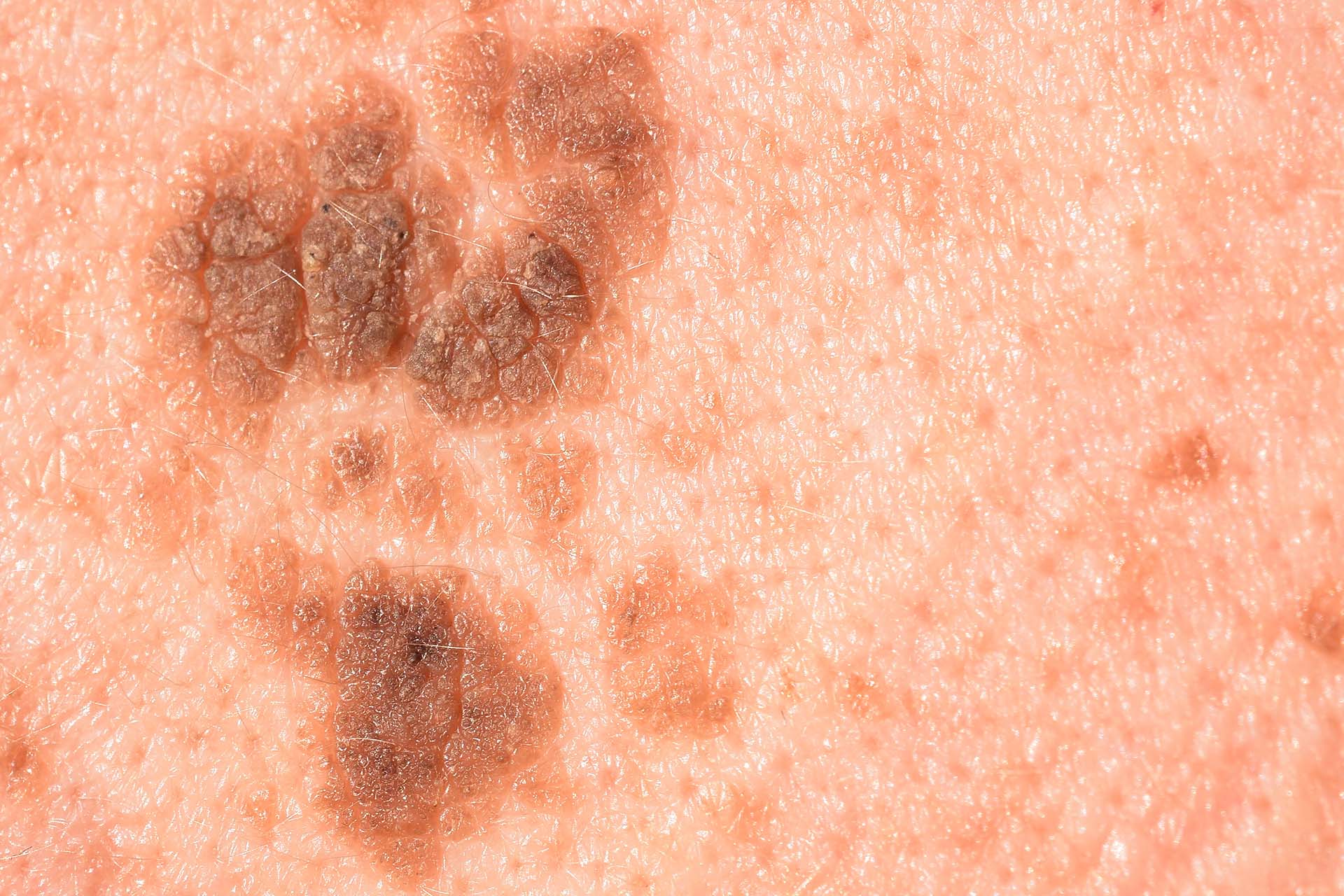
What is Seborrheic Keratosis?
Seborrheic keratosis (SK) is a common skin growth that begins to show in middle age people. Although its name and appearance sound scary, they are benign and harmless.
Since they begin to develop with age, SK has also been nicknamed the “barnacles of aging” because when there’s one growth, there are usually many.
What Does Seborrheic Keratosis Look Like?
Seborrheic keratosis can develop anywhere on the body except for the palms of the hands and the soles of the feet. They often appear on the scalp, face, neck, shoulders, back, chest, and stomach. The color can vary from light white, tan, or dark brown/black. Their size also varies from small dots to the size of a quarter.
Before seborrheic keratosis begins to form, the skin will feel waxy or bumpy in texture and may itch or tingle. The area will thicken and form growths that look like warts or moles. They may look similar to skin cancers such as melanoma, which is why it is important to have a dermatologist look at it.
What Causes Seborrheic Keratosis?
It is still not clear what the cause of seborrheic keratosis is. If you have a family history of SK, you may be at a greater risk of developing this skin condition. Other factors that might increase the risk of seborrheic keratosis are increasing age, chronic friction, lighter skin tone, hormonal changes, and sun exposure.
What is the difference between Seborrheic Keratosis and actinic keratosis?
Actinic keratosis and seborrheic keratosis can resemble one another. Both can appear crusted and scaly, and both begin to appear after the age of 40. Actinic keratosis is more severe than seborrheic keratosis, so it is crucial to understand the distinction.
However, actinic keratoses are typically less pigmented than seborrheic keratoses. They may be flat or slightly elevated but they are typically flat, and you may feel them before you see them. Like seborrheic keratoses, they may become more wart-like and lumpy as time passes.
How Is Seborrheic Keratosis Diagnosed?
A dermatologist will examine the diagnosis of seborrheic keratosis by assessing the area and evaluating the growth’s appearance and texture. Sometimes, they will take a biopsy to view its cells under a microscope to rule out melanoma or other skin conditions.
Can Seborrheic Keratosis turn into cancer?
If the growing looks unusual when you see PA Ellie, DMSc, it bleeds easily, or looks atypical, it must be referred to a dermatologist since some SK can turn to malignant lesions.
How Is Seborrheic Keratosis Treated?
Since they are benign, it is not necessary to treat seborrheic keratoses. However, if their appearance is bothersome if they get caught in your clothing or jewelry, and or if they become itchy/irritated, you have different options for removal.
- Freezing: Liquid nitrogen can be used as cryotherapy to freeze the growths, causing them to fall off after a few days.
- Electrocautery: A needle with a low-voltage electrical current is applied to the growth to burn it off.
- Laser ablation: A laser vaporizes and removes the seborrheic keratoses.
- Shave excision: The keratoses are removed with a sterile razor.
- Curettage: The growths are sliced or scraped off using an instrument called a curette.
Depending on the method used and the size of the SK, your skin will heal anywhere from 1-4 weeks. Typically, the removed SK won’t return, but new ones may grow in other areas.
Clear Your Skin of Seborrheic Keratosis Today
Schedule a consultation with our certified medical provider, Ellie Zarnegar, PA, DMSc, today and learn more about how she can help you clear your skin of seborrheic keratoses. Call or text us at 925.855.1773 or request a consultation online.
